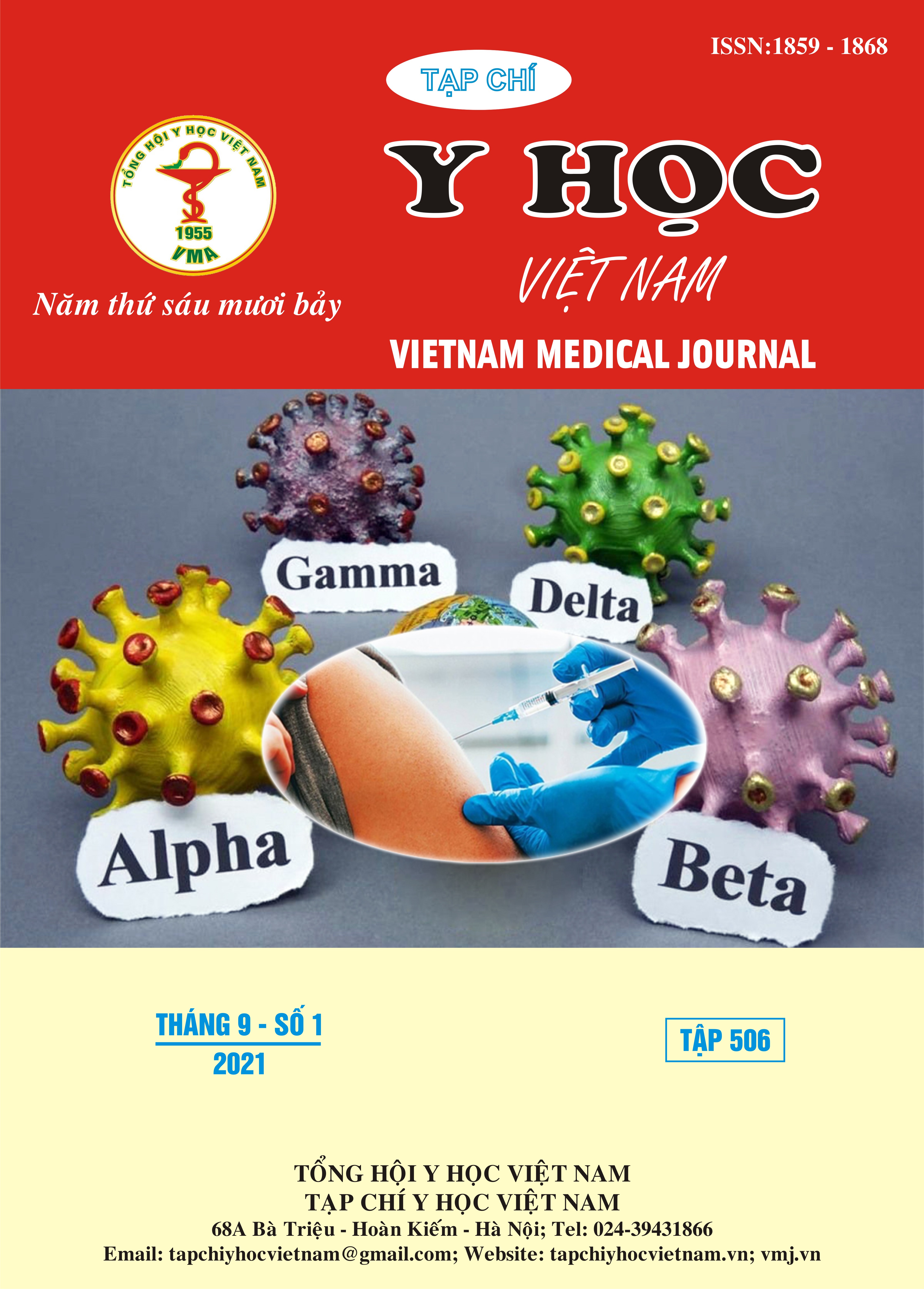COMMUNITY-ACQUIRED PNEUMONIA IN CHILDREN: USED ANTIMICROBIAL THERAPIES AND THE FACTORS INFLUENCING THE TREATMENT EFFECTIVENESS
Main Article Content
Abstract
Introduction: Antimicrobial therapies are the main treatment for Community-acquired pneumonia (CAP) in children. Nowadays, the high ratio of multidrug-resistant bacteria leads to updating the actual antibiotical usage to control and use antibiotics safely as well as effectively. Objectives: To study the use of mono and combination therapy, related factors of the effectiveness of the CAP treatment in children from 2-60 months of age. Materials and methods: A cross-sectional, retrospective study on 360 medical records of children hospitalized from September 2018 to September 2019 was conducted at some hospitals in Quang Nam province. Results and discussions: Mono-therapy with β-lactams (92.6%) predominates over combination therapy. Among the monotherapy, amoxicillin has the highest frequency of use (25.2%). Combination therapy with beta-lactam and macrolide accounted for the highest rate (53.7%) compared with other combinations. The rate of antibiotic use with an appropriate dose and timing administration was 81.4% and 94.4%, respectively. The success rate of CAP treatment reached 89.2% within the first 48-72 hours. The factors influencing the effectiveness of the treatment include the history of the patient, the severity of disease, the history of antibiotic use, and the appropriateness of the dose. Conclusions: In general, the indications of antibiotic therapy, dosage, and timing administration in hospitals are mostly under current guidelines. Factors affecting treatment effectiveness within 48-72 hours should be taken into consideration to improve patient outcomes.
Article Details
Keywords
Community-acquired pneumonia, children, antibiotic therapy, treatment effectiveness
References
2. WHO. Antimicrobial resistance 2020 [updated 13 October 2020]. Available from: https://www.who.int/news-room/fact-sheets/detail/antimicrobial-resistance.
3. Bradley JS, Byington CL, Shah SS, et al (2011). The Management of Community-Acquired Pneumonia in Infants and Children Older Than 3 Months of Age: Clinical Practice Guidelines by the Pediatric Infectious Diseases Society and the Infectious Diseases Society of America. Clinical Infectious Diseases,53(7),25-76.
4. Quách Ngọc Ngân, Phạm Thị Minh Hồng (2014). Đặc điểm lâm sàng và vi sinh của viêm phổi cộng đồng ở trẻ từ 2 tháng đến 5 tuổi tại Bệnh viện Nhi đồng Cần Thơ. Tạp chí Y Học TP. Hồ Chí Minh,18(1),294-300.
5. Hội đồng Dược thư quốc gia Việt Nam (2018). Dược thư quốc gia Việt Nam. NXB Y học.
6. The Paediatric Formulary Committee (2019). BNF for children. Pharmaceutical Press, London.
7. Ambroggio L, Taylor JA, Tabb LP, et al (2012). Comparative effectiveness of empiric β-lactam monotherapy and β-lactam-macrolide combination therapy in children hospitalized with community-acquired pneumonia. The Journal of pediatrics,161(6),1097-103.
8. Williams DJ, Edwards KM, Self WH, et al (2017). Effectiveness of β-Lactam Monotherapy vs Macrolide Combination Therapy for Children Hospitalized With Pneumonia. JAMA pediatrics,171(12),1184-91.
9. Hoa NQ, Trung NV, Larsson M, et al (2010). Decreased Streptococcus pneumoniae susceptibility to oral antibiotics among children in rural Vietnam: a community study. BMC infectious diseases,10:85.


